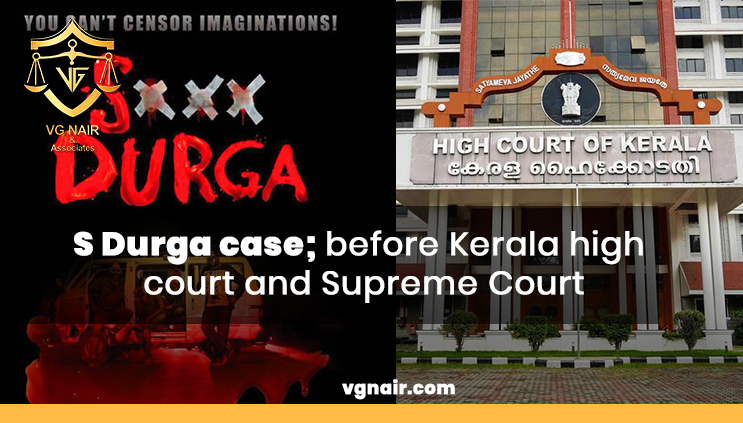S Durga case before Kerala high court and Supreme Court

The "S Durga" case, which originated from a film depicting themes surrounding gender and cultural identity, has drawn significant legal scrutiny in both the Kerala High Court and the Supreme Court of India. The court cases primarily addressed issues of artistic expression, community sentiments, and the balance of free speech against potential public harm. The rulings reflect the courts' efforts to mediate between creative freedoms and social sensitivities, ultimately impacting the representation of women and the dynamics of cultural discourse in India.
Background of the Case
The "S Durga" film, directed by Sanal Kumar Sasidharan, faced controversy upon its release due to its provocative title and content, perceived by some as disrespectful to cultural and religious sentiments. The film was screened at various festivals but faced backlash from certain groups who argued that it trivialized Hindu deities and could incite communal tensions. This led to petitions requesting a ban on the film’s screening, igniting debates around artistic freedom versus societal norms.
The Kerala High Court Proceedings
In the Kerala High Court, the arguments revolved around the freedom of expression guaranteed under the Indian Constitution. Petitioners sought to challenge the film's screening, alleging that it hurt religious sentiments. The court highlighted the need to consider the artistic intent of the filmmaker and the importance of creative expression while also acknowledging the concerns raised by petitioners.
The Kerala High Court ultimately examined the case through the lens of public interest and legal standards pertaining to obscenity and defamation. The court sought to balance the right to artistic freedom with the responsibility to respect cultural and religious sentiments, a theme prevalent throughout the proceedings.
Ruling of the Kerala High Court
The Kerala High Court ruled in favor of allowing the film to be screened, asserting that artistic expression should not be arbitrarily stifled. The court emphasized that the film's content, albeit contentious, did not warrant a blanket ban as it fell within the realm of individual interpretation and artistic critique
Escalation to the Supreme Court
Following the High Court's decision, parties on both sides continued to express dissatisfaction, leading to appeals reaching the Supreme Court. The Supreme Court was tasked with reviewing the legal standards employed by the Kerala High Court and providing clarity on the issues of freedom of expression in creative work.
Supreme Court Proceedings
In the Supreme Court, the central arguments revisited the balance between community sentiments and the rights of the creator. Justices deliberated on the implications of upholding or overturning the lower court's ruling, reflecting on the broader societal impacts of artistic expression. The court recognized the increasing sensitivity surrounding media representations and sought to establish a clear precedent that defended both artistic freedom and community rights.
Final Ruling of the Supreme Court
The Supreme Court ultimately upheld the Kerala High Court's ruling by allowing the film's screening, reinforcing the principle that artistic works warrant a significant degree of protection under free speech provisions. Following the court's ruling and re-examination, the film was granted a 'U/A' certificate, and the director expressed hope for a nationwide release soon after the initial ban was lifted. The film, which sparked significant discussion regarding censorship and artistic expression in India, was subsequently approved for public viewing.
In summary, while "S Durga" was initially banned from public exhibition due to actions taken by the CBFC, legal challenges led to its eventual clearance, thereby allowing its release. The court noted that while community sentiments are crucial, the pathway to dialogue and understanding should not come at the expense of censorship.
This ruling established a significant legal benchmark regarding the representation of cultural and religious themes in artistic endeavors, aiming to foster a climate where freedom of expression can coexist with respect for social values.
